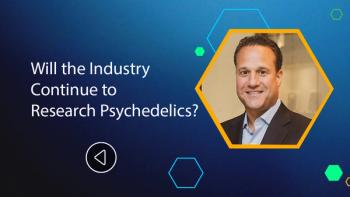
Creating Effective Peptide-Based Therapeutics
Peptilogics Founder, CEO, Jonathan Steckbeck, explained that PLG0206 stands apart from current treatments, while the company’s discovery platform transforms drug development from an iterative search process into a data-driven design model.
Pharmaceutical Executive: What makes your peptide-based therapeutic fundamentally different and or more effective than current standards of care?
Jonathan Steckbeck: Yeah, that's a great question. So there's two key things that make our drug, PLG0206, (206 or zaloganan) more effective than the kind of current standard of care. And so one is that it's delivered locally to the site of the infection, so we're able to put it where the problem actually exists. But then the bigger thing, the more important of the two things, is the way the drug works. And again, at a high level, what it does is that it is able to destroy biofilm based bacteria. So biofilm is a way bacteria grow that protect themselves from the environment, whether it's drugs or the immune system. And so that leads to those high failure rates that you mentioned in PGI treat, in current PGI treatment. And so 206, like I said, how, by its mechanism of action, destroys that biofilm very rapidly and very effectively, leading to hopefully better outcomes for the patients.
PE: How is this tech-enabled approach accelerating peptide discovery and what does it unlock that traditional R&D might miss?
Steckbeck: so we based our generative approach on actually how we had originally developed 206 that are our lead drug, and that was really at a high level, trying to understand how biological properties or biological activities related to the sequence and structure of the molecule. And so as 206 kind of continued to advance through the development successfully. We thought there was a way to use some of the generative tools to kind of go more broad than we did on just 206, trying to understand, because if you think about biological properties, are really the same thing as pharmaceutical attributes, right? And so if we could understand broadly how more biological properties or pharmaceutical properties related to molecular sequence and structure, we might be able to design drugs with the activities that you wanted from the very beginning, rather than going kind of a more typical iterative discovery process, and so really, what it does, or it allows us to do is kind of flip that paradigm from a search to a design.
Newsletter
Lead with insight with the Pharmaceutical Executive newsletter, featuring strategic analysis, leadership trends, and market intelligence for biopharma decision-makers.





